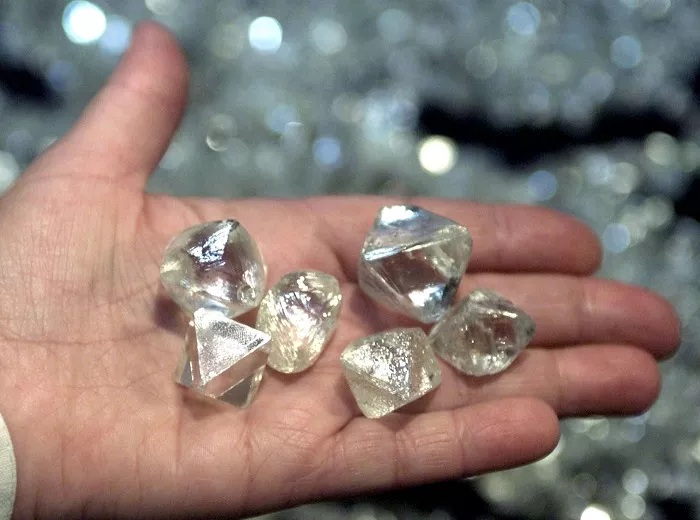The Indian diamond industry often uses vacation periods to recalibrate the market, with Diwali being the most notable time when factories close for varying lengths depending on demand. This August, while less prominent, includes Independence Day and other holidays. This year, with high inventories and weak prices, the industry is taking advantage of the downtime.
Kiran Gems, claimed to be the world’s largest natural-diamond manufacturer, will halt production for 10 days starting August 18. Typically, this break lasts about five days. Other companies are also extending their holiday periods.
This production reduction effort began before the August break. Factories in Surat cut production by up to 50% in July and the first week of August compared to the previous year, according to industry executives.
Anoop Mehta, president of Mumbai’s Bharat Diamond Bourse (BDB), noted, “Production has been drastically reduced, down by about 40% to 50%.” Kiran Gems has also reduced its output by 50% during this period, according to Dinesh Lakhani, the company’s global director.
The production cuts are driven by high inventories and a desire to mitigate losses due to the disparity between high rough prices and low polished diamond prices. “If I can’t make money, then I’m paying cash for raw material and not making a profit,” Mehta explained.
Companies took advantage of De Beers’ flexible policies during its July sight, with sales estimated to be under $200 million. Petra Diamonds postponed its August-September rough tender to October, and Alrosa also sold fewer diamonds than usual, according to market sources. De Beers has since announced it will merge its August sale with its October session, with the combined trading event scheduled for September.
Okavango Diamond Company (ODC) sold $55.5 million worth of goods at its August auction, a decrease from $66.6 million in June. Prices dropped by 5% to 15%, reflecting weaker demand.
The impact of India’s reduced rough buying will be clearer when July’s import statistics are released later this month. Unlike last year, there is no formal joint effort to address oversupply. The Gem & Jewellery Export Promotion Council (GJEPC) and other organizations had previously suggested a two-month freeze on rough imports to balance supply and demand. This time, manufacturers are managing the situation on their own, according to GJEPC chairman Vipul Shah. “People are trying to be self-disciplined and weather the storm,” Shah said.
During downturns, manufacturers often shift to producing smaller, lower-value goods. This trend is repeating, though for seemingly positive reasons. Goods under 0.18 carats are performing better than larger items, prompting manufacturers to increase the proportion of melee diamonds in their production.
Shifting production to smaller stones is challenging due to different skill requirements. Some workers or departments specialize in larger stones and cannot easily transition. Ravi Bhansali, managing director at Rosy Blue in Antwerp, noted that production cuts are most severe for diamonds between 0.18 and 3 carats, with these sizes facing the greatest difficulties.
Despite weak demand for larger diamonds, melee stones remain essential for various types of jewelry and watches. “Even though melee is down, it is still selling to some extent,” Bhansali said. The Indian domestic market, which has outperformed the US and China during the downturn, is expected to boost demand as it prepares for Diwali and the wedding season starting in November. Smaller Asian markets, including Japan, Malaysia, the Philippines, and Thailand, are also supporting this segment.
Looking ahead, the key question is whether these production cuts will lead to a long-term improvement and if demand will recover in major markets. GJEPC’s Shah believes now might be a good time for buyers to stock up, as production cuts typically take about six weeks to affect polished inventories. With Diwali approaching in November, further manufacturing slowdowns are likely.
“In the coming months, the pipeline is going to get dried up,” Shah predicted.


